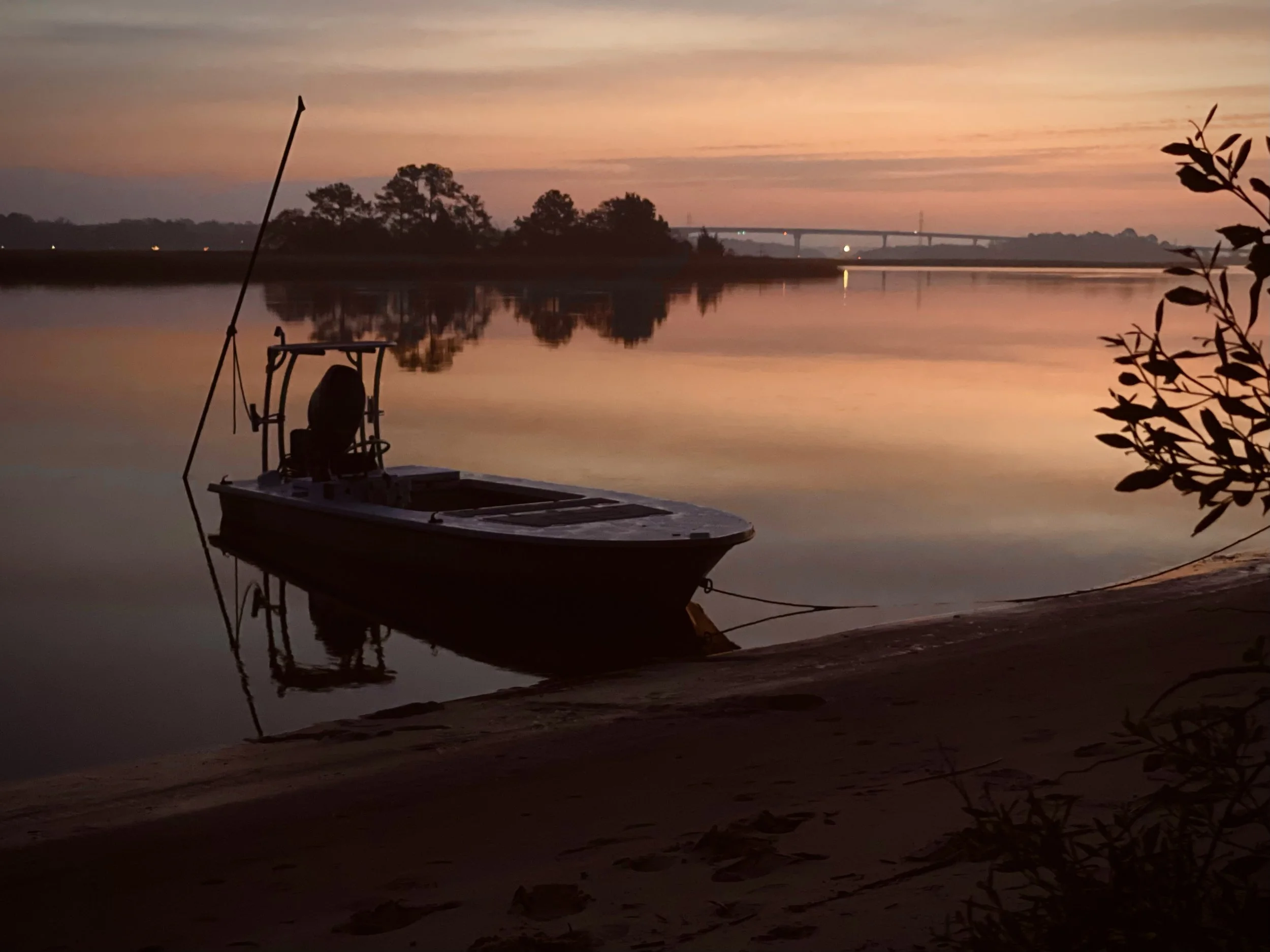The Origins of Fly Fishing Around Charleston — and the Early Guides Who Made It Their Life
Charleston’s relationship with fish is as old as the city itself. Long before rods, reels, and tailored waders appeared, the Lowcountry’s tidal creeks, marshes, and barrier islands were home to generations who harvested fish for food, trade, and survival. Over time those utilitarian pursuits—combined with changing social habits, leisure culture, and boat technology—evolved into the recreational and sport fly-fishing scene Charleston is known for today. Below is a brief history tracing that shift and the early guides who helped turn it into a living tradition.
From subsistence to sport: a 19th-century beginning
Fishing in the Charleston region was essential to indigenous peoples and, later, to European and African settlers. Newspaper reports and local chroniclers from the 1800s describe both commercial and recreational fishing outings—some written more as entertaining “fish tales” than technical reports—showing that Charleston residents were already enjoying angling beyond mere subsistence by the mid-19th century. These accounts give us a snapshot of a coastal community that prized the sea for work and play alike.
The Mosquito Fleet and the rise of local watermen
Through the late 19th and early 20th centuries, Charleston’s “Mosquito Fleet” of small workboats and skiffs dominated shallow-water navigation. These boats—built for inshore hauling, shrimping, and transport—also provided the platform for guided fishing outings as recreational sport grew. Skilled watermen who knew tides, flats, and fish movements became informal guides for visiting sportsmen and locals, translating their commercial knowledge into the emerging leisure economy. The Mosquito Fleet’s role in connecting people to inshore fisheries was crucial: it physically enabled access to the flats where fly anglers would later stalk reds, trout, and other prized species.
Early “guides” — families and characters who shaped the craft
Unlike the formal guide services of today, early Lowcountry guides were most often lifelong watermen—boat builders, oystermen, shrimpers, and skiff operators—who taught anglers where and how to fish. Some local families established multi-generation ties to guiding and fishing that continued into the 20th century; profiles of veteran captains show lineages stretching back to the 1800s. These practitioners passed practical knowledge—how to pole a skiff, where fish feed on particular tides, and how to read the marsh—down the generations, laying the foundation for a professional guiding culture.
Saltwater fly fishing arrives (and becomes specialized)
Fly fishing’s deep history reaches back to Europe and beyond, but saltwater fly fishing as a focused pursuit in Charleston developed more slowly. Early 20th-century anglers experimented with casting into estuaries and creeks, but it wasn’t until the mid-to-late 20th century—when lighter tackle, improved flies, and dedicated guide services matured—that fly fishing for species like red drum (redfish) and spotted sea trout became a distinct local sport. As tourism grew and Charleston’s reputation as a fishing destination spread, a new class of guides emerged whose primary trade was taking visiting and local anglers on fly-focused trips.
Techniques, boats, and innovations
The tools of the trade changed the game. Traditional skiffs and poling techniques—once practical measures for working the marsh—were adopted and refined by guides as the preferred way to present flies in skinny water. At the same time, fly patterns evolved to imitate the shrimp, baitfish, and crustaceans of the estuary, and casting styles adjusted to the gusts, marsh channels, and long casts necessary to reach tailing reds. The combination of local boat craft, ecological knowledge, and fly-tying creativity created a distinct Lowcountry fly culture.
Conservation, regulation, and modern guiding
As the popularity of recreational fishing increased, so did attention to fishery health and management. Local associations, and later state and regional conservation organizations, worked with guides and the public to promote sustainable harvest, size limits, and habitat protection. Modern guides in Charleston often balance hospitality and instruction with stewardship: many are active in conservation groups and emphasize catch-and-release techniques, habitat awareness, and ethical guiding practices. This focus helps protect the very flats and tidal creeks that made the sport possible.
Why Charleston matters to saltwater fly anglers today
The combination of rich tidal systems, a long human relationship with the water, and generations of local watermen-turned-guides is what makes Charleston’s fly-fishing scene distinctive. From the colonial-era fishers and the Mosquito Fleet to the families and pioneering guides of the 20th century, the Lowcountry’s angling tradition is a living tapestry of craft, place, and community. Today’s guides stand on that history—blending old knowledge with modern techniques—and continue to introduce anglers to some of the best inshore fly fishing on the East Coast.
Sources & Further Reading
Charleston County Public Library – Fish and Fishermen in 1888, Charleston
ccpl.orgSouth Carolina Sea Grant – The Mosquito Fleet (Coastal Heritage, 1982)
PDF LinkCharleston Living Magazine – Historic Fish Stories
charlestonlivingmag.comSports Illustrated – Fly Fishing and Feasting in Charleston, SC
si.comSaltwater Sportsman – Fly Fishing for Redfish in Charleston, South Carolina
saltwatersportsman.comSport Fishing Magazine – Great Fishing in Charleston, South Carolina
sportfishingmag.comLowcountry Digital Library – archival maps, photos, and manuscripts on Charleston’s maritime history
lcdl.library.cofc.eduMary Orvis Marbury – Favorite Flies and Their Histories (1892)
Thaddeus Norris – The American Angler’s Book (1864)


